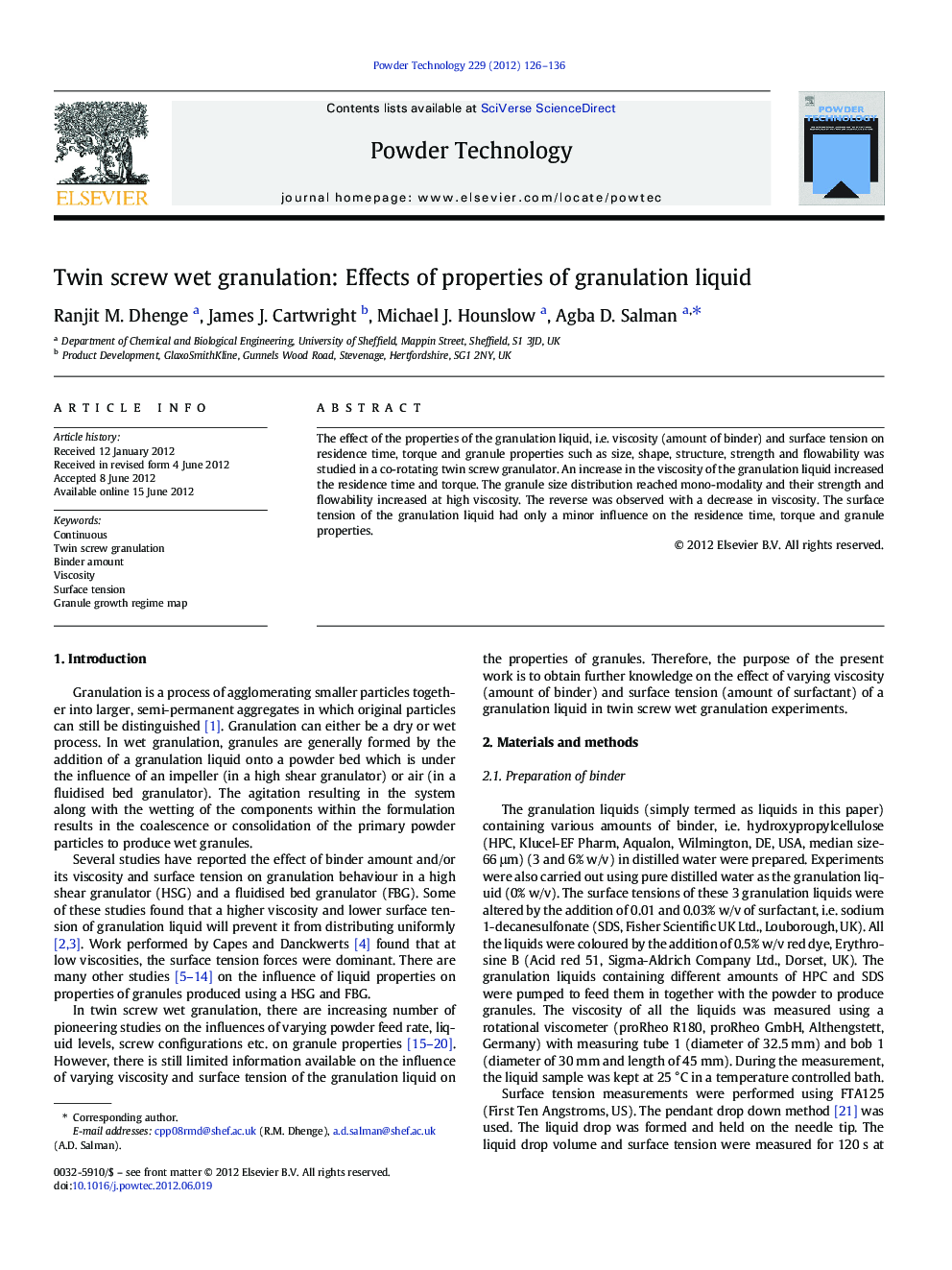| Article ID | Journal | Published Year | Pages | File Type |
|---|---|---|---|---|
| 237020 | Powder Technology | 2012 | 11 Pages |
The effect of the properties of the granulation liquid, i.e. viscosity (amount of binder) and surface tension on residence time, torque and granule properties such as size, shape, structure, strength and flowability was studied in a co-rotating twin screw granulator. An increase in the viscosity of the granulation liquid increased the residence time and torque. The granule size distribution reached mono-modality and their strength and flowability increased at high viscosity. The reverse was observed with a decrease in viscosity. The surface tension of the granulation liquid had only a minor influence on the residence time, torque and granule properties.
Graphical abstractThe various boundaries for the different regimes in the map are based on the deformation number (β) and L/S × viscosity. Addition of slightly more amount of liquid and/or increasing viscosity shifts the “crumb” to the “granule” regime and further amount of liquid may lead to “over wetted or paste.” At an intermediate L/S × viscosity, a higher β can shift the product from “granules” to “crumb” as the system becomes weaker. Figure optionsDownload full-size imageDownload as PowerPoint slideHighlights► We examined effects of change in properties of liquid binder on granulation behaviour. ► Viscosity played dominating effect on granule properties than surface tension. ► We proposed a granule growth regime map for twin screw granulation.
